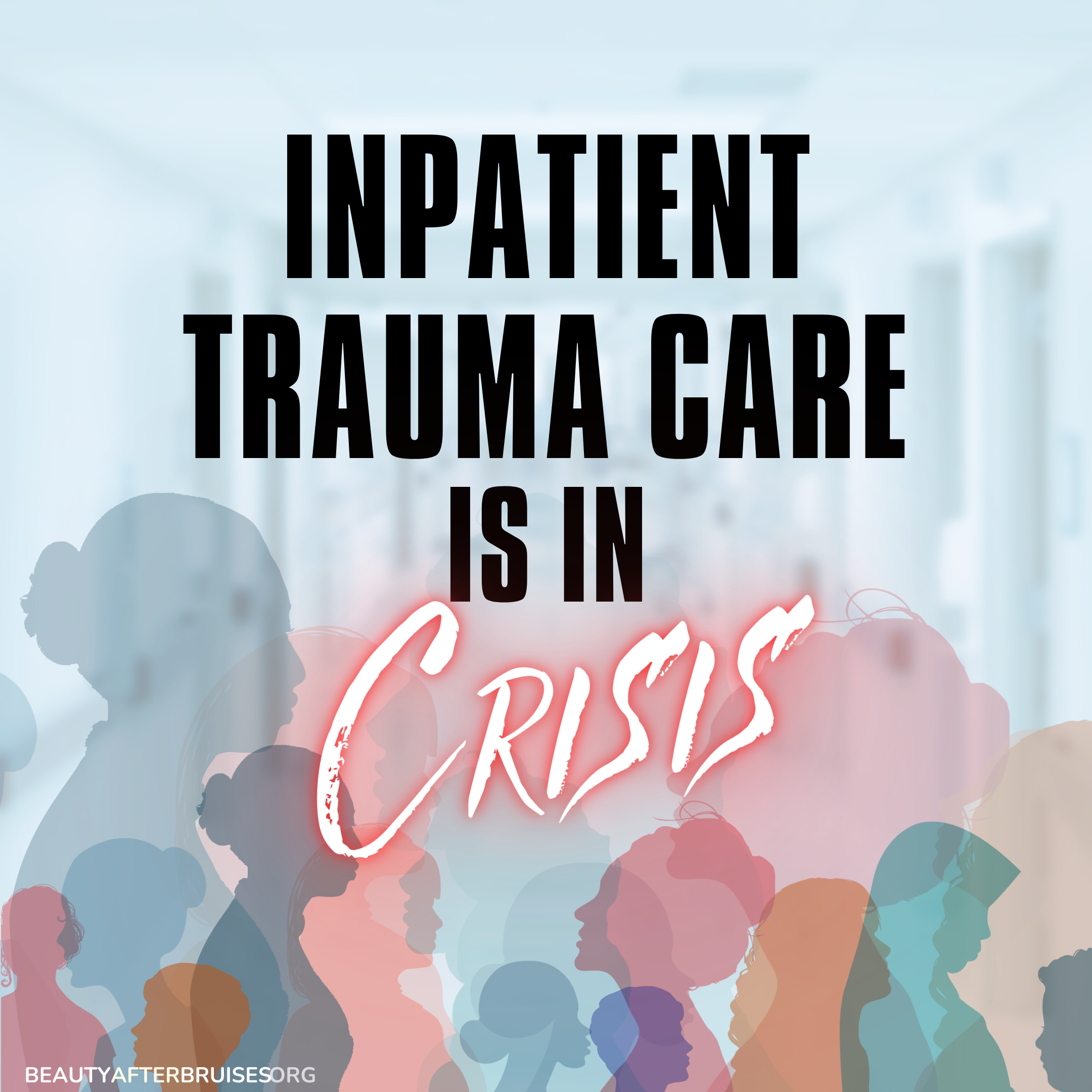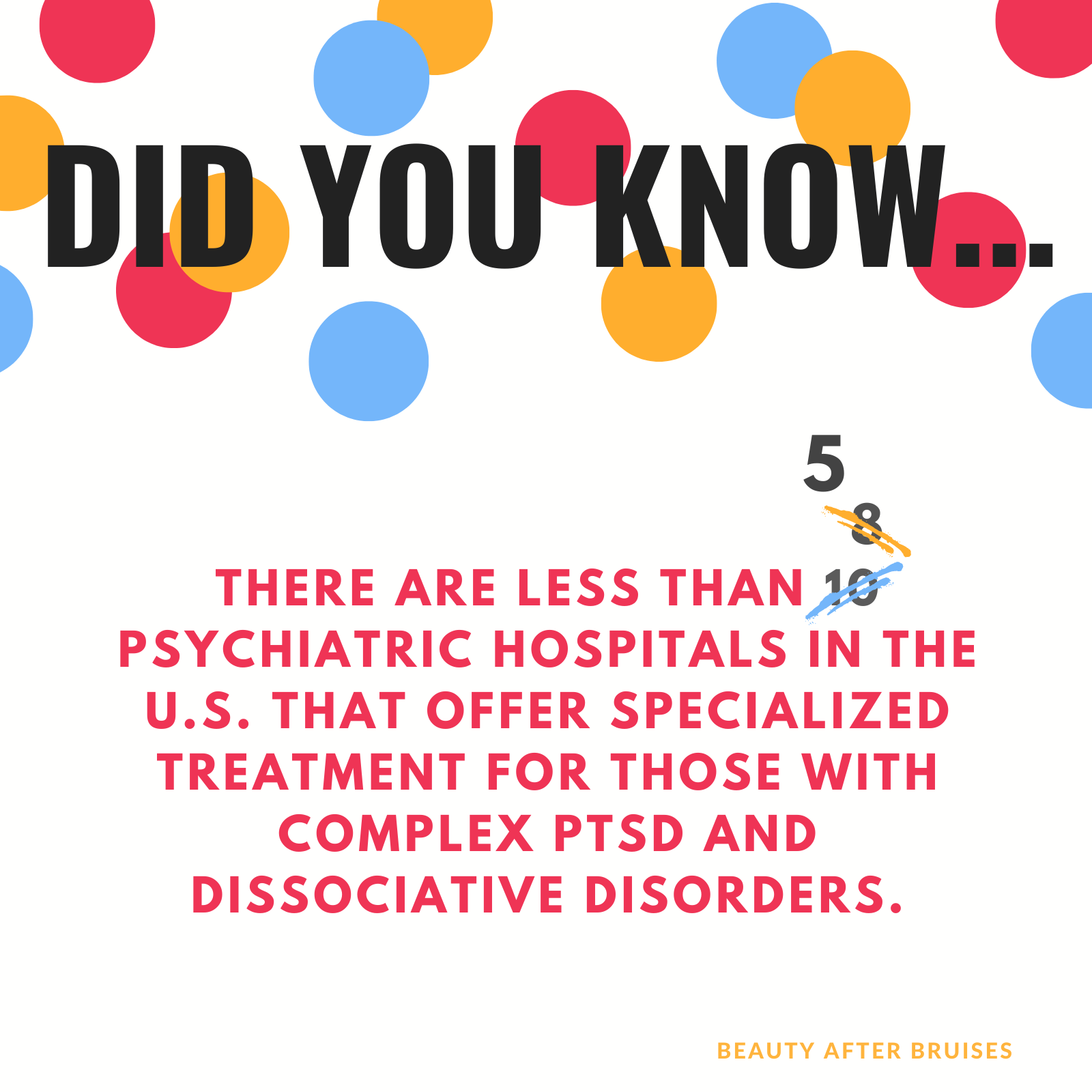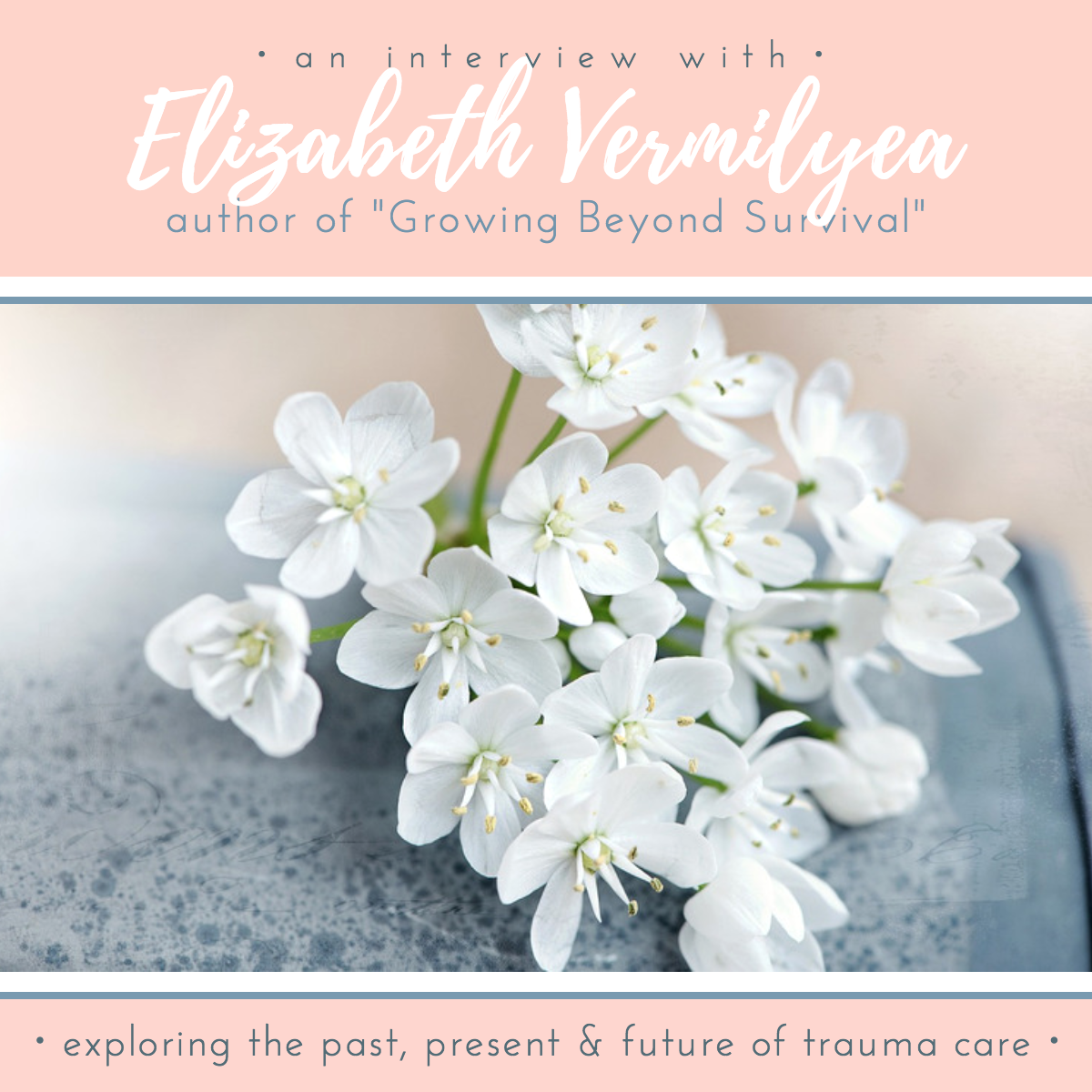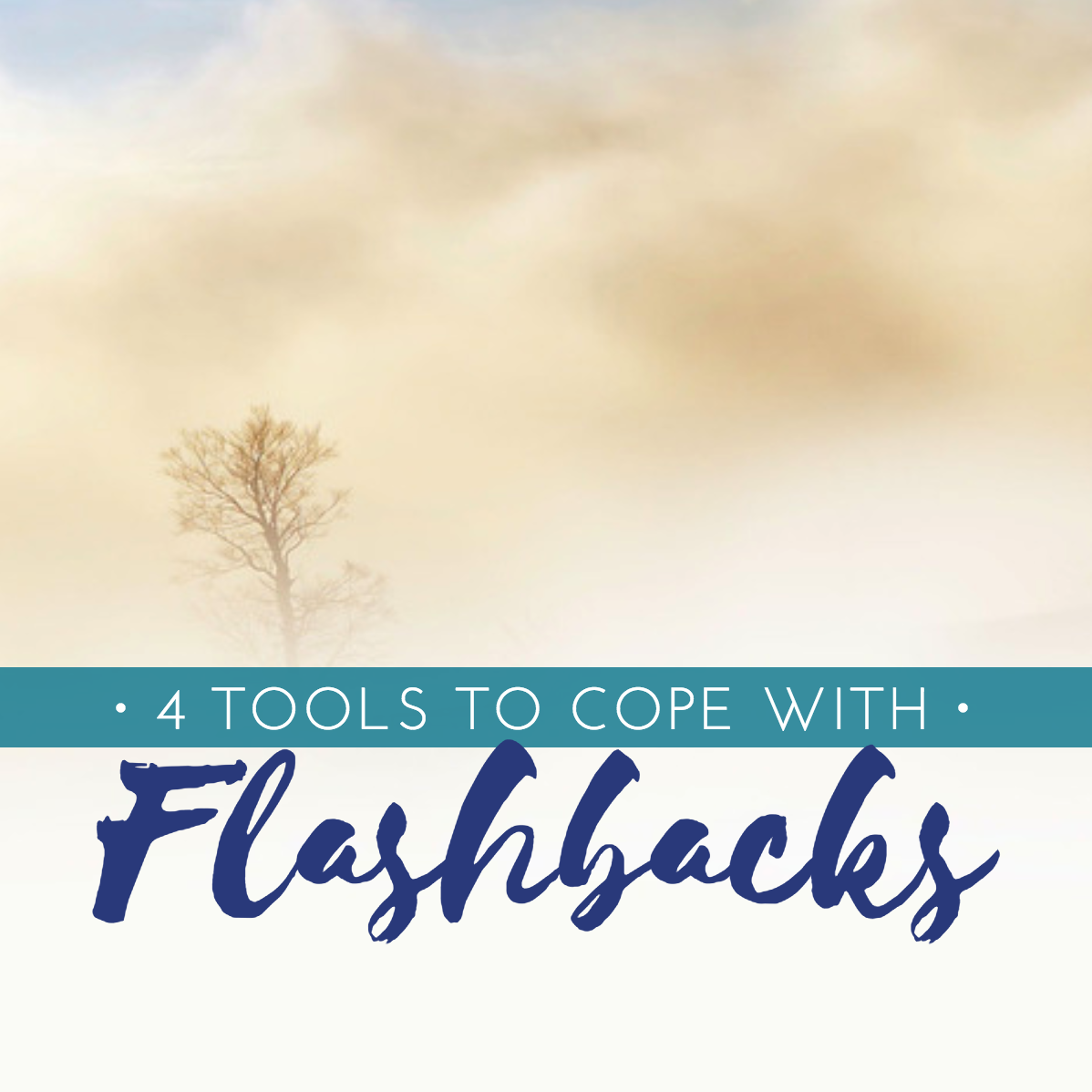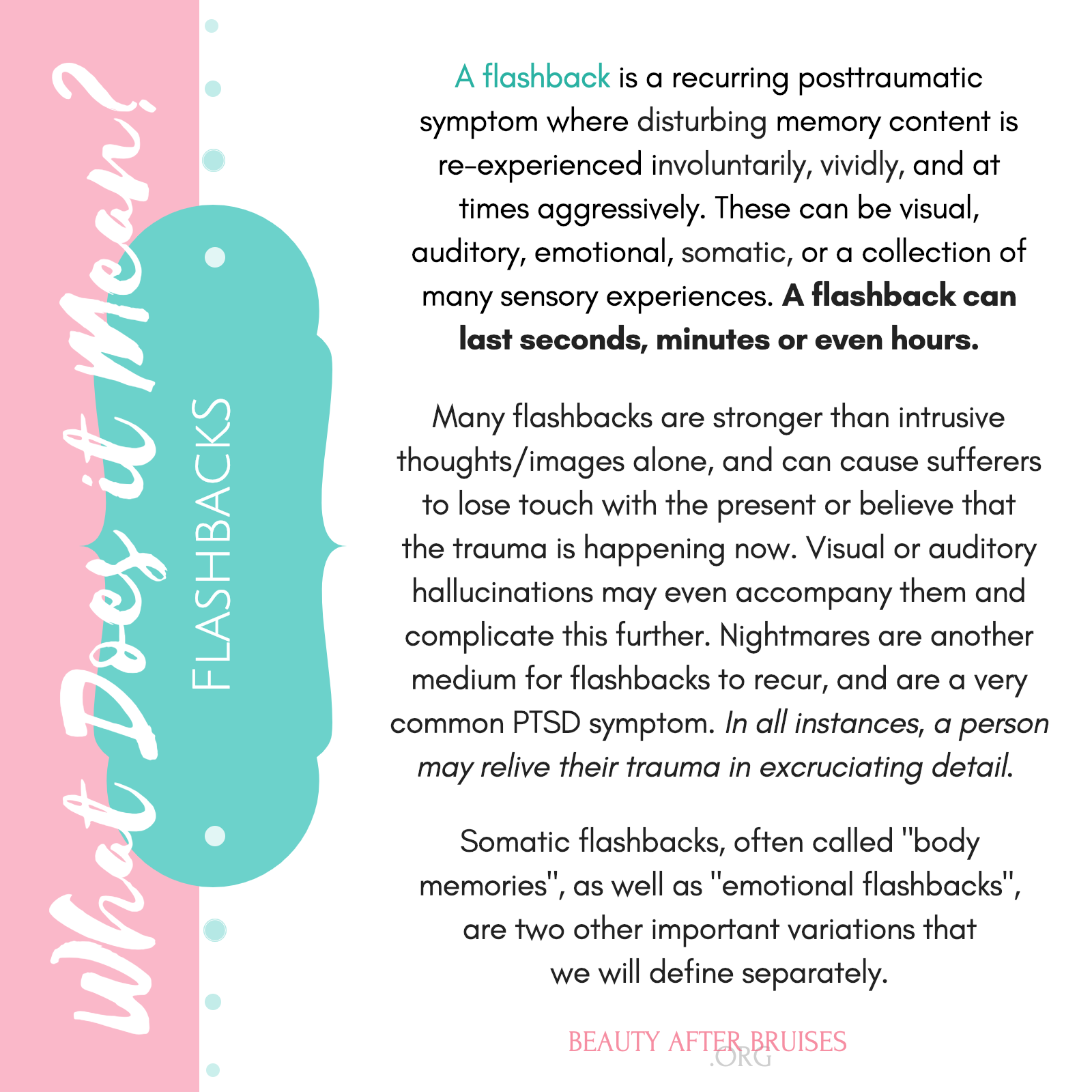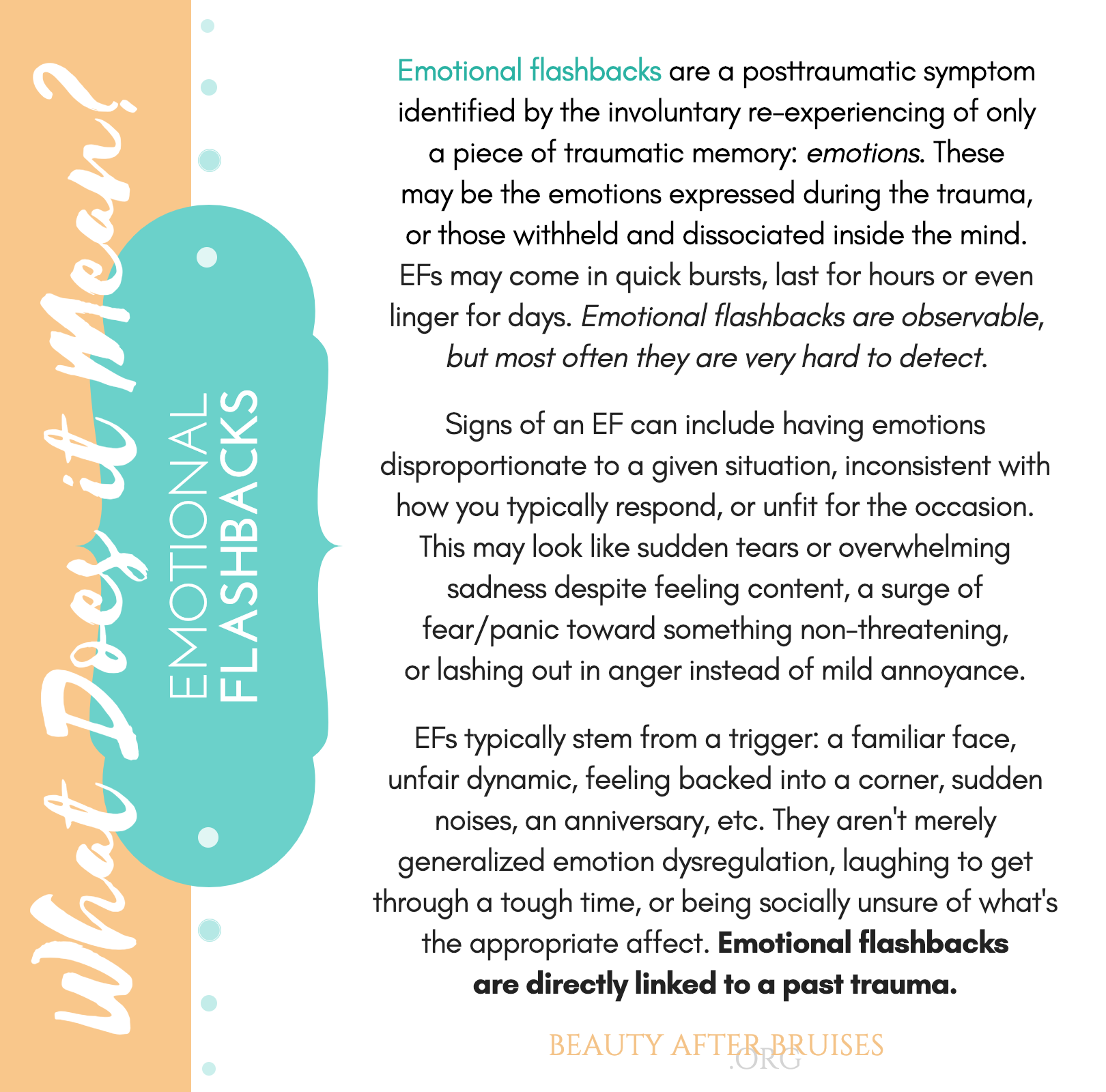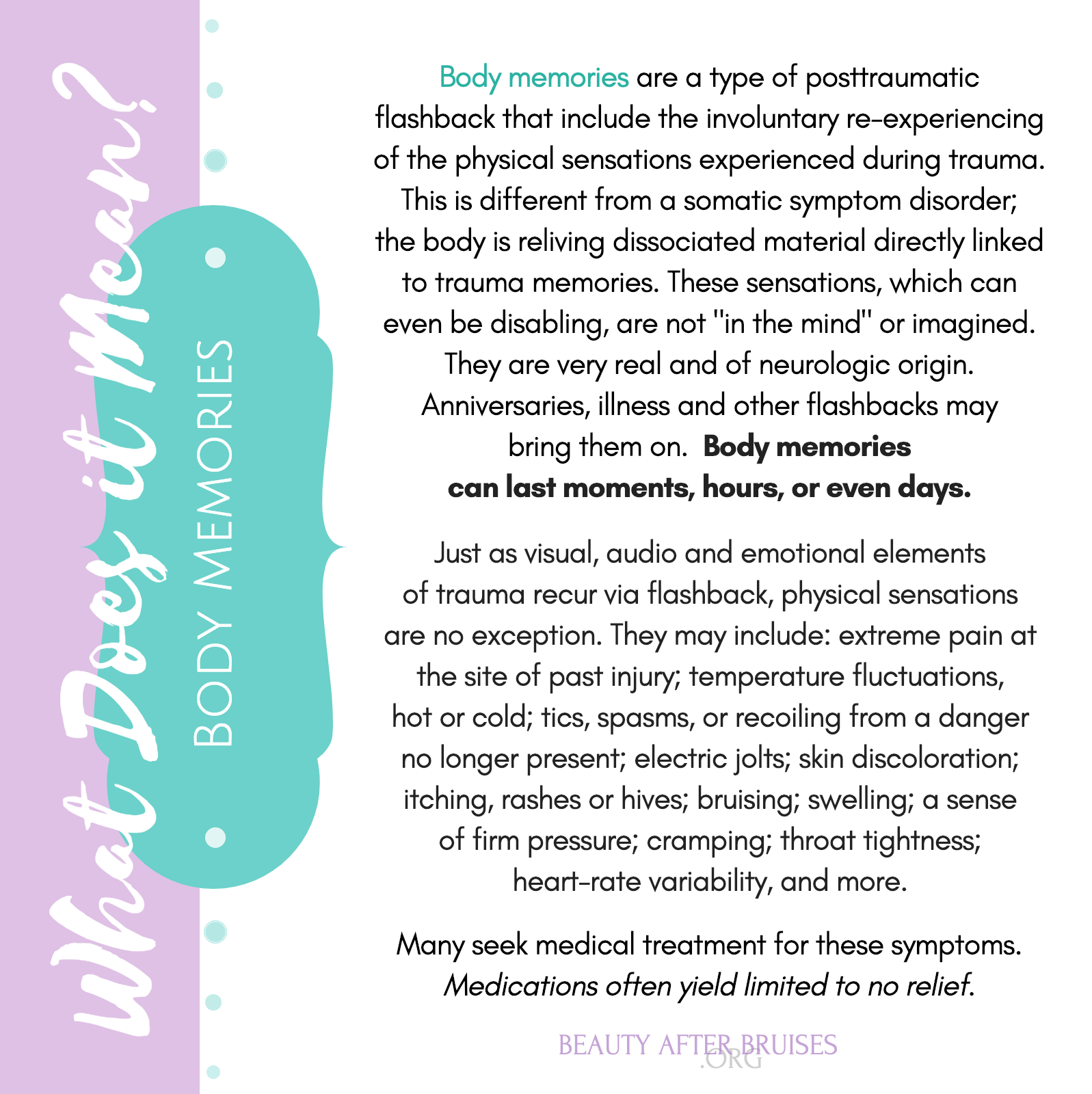Since Beauty After Bruises’ inception, we have been speaking to the dire need for more specialized, trauma-competent care for survivors with Complex PTSD and Dissociative Disorders. Not only a need for more therapists, psychiatrists, medical doctors, and healthcare services at large, but most critically, inpatient care. We were distressed by the lack of inpatient trauma units available back then, but following so many recent, rather sudden closures, it is no longer alarmist to say: This is a crisis.
So, what on earth is happening? Why are these units closing? And, what do we do from here if we’re to have any hope of keeping our complex trauma survivors alive?
Hopefully, this in-depth look can shed some light on a rather complex problem - starting with how grave the situation we were already in many years ago truly was.
Though there are thousands of psychiatric hospitals, facilities, and individual units across the United States, there are now less than five who are equipped to treat the nuanced, highly specialized needs of survivors with Complex PTSD and Dissociative Disorders. Devastatingly, we have had to sit back and watch in horror as some of the leading mainstays in trauma and dissociation closed their doors one-by-one. Others have downsized, greatly limited who they accept (based on patients’ location or level of care needed), changed leadership (and thusly, the structure and quality of their programs), or merged units with other psychiatric populations. This is unacceptable, worrying, and - truthfully - dangerous for all survivors in critical need.
WhY A specialized TRAUMA UNIT?
It may be easy to assume that survivors can go to any unit, or at least the next best thing - particularly if their life depends on it. But, 'just going somewhere else' often isn’t a safe or viable option; it may even jeopardize their lives further. Even units claiming they “are trauma-informed,” “see patients with DID,” “have a trauma track,” or simply “treat PTSD” are rarely, in fact, trauma-competent. We know it is possible to leave even the highest-rated inpatient programs with more trauma than the day you arrived, but when missteps and failures happen in the care of those who erroneously think themselves equipped to process trauma, bring child parts out of flashback, or talk time-disoriented alters down from active safety crises, the consequences can be fatal. They already have been. Intellectually knowing ways trauma can affect a mind and body versus having the skills, training, staff, environment, safety protocols, infrastructure, and detailed curricula to treat or engage with a traumatized patient are very, very different things. This distinction exponentiates when caring for survivors with Dissociative Identity Disorder or who have organized perpetrator groups still active in their lives.
Other psychiatric units and residential programs unintentionally place complex trauma patients in danger when they do not have specialized treatment teams, properly-trained unit staff, quiet and low-trigger atmospheres (separate from other psychiatric populations), and/or locked units capable of handling both safety threats from outside the building as well as dissociative or wandering patients inside the building. It requires a very nuanced education to, first, correctly identify, and then safely engage with a survivor who is in crisis versus a flashback, switching between self-states, having an immediate safety threat, or experiencing a medical emergency. These are all delicate concerns of life and death, particularly when patients are already coming onto the unit at a critical low, with their symptoms and safety impulses most unmanaged. This is not merely the difference between a 3- or 4-star review.
Unfortunately, because there are no other options, many survivors are sent to these other locations. Or, they’re left to roll the dice in gen-psych in hopes of either stabilizing in 3 days or - at the very least - adjusting necessary medications and quickly returning to their outpatient therapists. Rarely is any true therapy or treatment provided here, only attempts at acute stabilization. Other survivors are forced to come up with tens of thousands of dollars to try a more trauma-centered residential program. But, many of these locations run into the very same trouble as those above — particularly their inability to take on clients struggling with critical safety issues, behavioral outbursts, or co-occurring eating disorders, substance abuse, or medical illness. While not being a locked unit can offer survivors more freedom, it also means staff are unable to prevent elopement and are woefully under-equipped for any external safety threats, intruders, or even belligerent visitors. This not only jeopardizes the life and wellbeing of the patient that these nefarious folks may be after, but also the lives of everyone else in the program, staff included.
It should also be noted that this sincerely tragic and heartbreaking state of affairs is not limited to the United States. This is a global crisis. Most countries have exactly zero trauma units. Some have one or two, though often of questionable caliber. Healthcare systems set aside, most nations encounter these very same complications internationally. It is unacceptable that, right as we are all becoming more trauma-aware and trauma-educated than we’ve ever been, this is when doors begin closing left and right. So, what is happening? And why is it happening? Let’s examine.
WHY ARE TRAUMA UNITS CLOSING EN MASSE?
Unfortunately, like most things in life - particularly healthcare - it is multifactorial. With so many moving parts, people, institutions, dollar signs, and powers that be, it’s tough to summarize such a complex issue. That doesn’t mean we shouldn’t try to at least identify all we can discern, otherwise we delay working on the elements within our means of influence. It is not hyperbolic to say survivors will die each day we fail to understand and, most importantly, begin to rectify this crisis.
An incomplete list of known reasons:
Hospital budget cuts. The simplest answer will always be money. And, when it comes to hospital systems, trauma units are often the easiest to cut when they need to trim margins - even if the program is in high demand, always full, and has a waitlist a mile long. They are usually the most niche focus in the entire hospital. They are also hard to advocate for amongst suits who have no knowledge of trauma or dissociation broadly, let alone how widespread it actually is.
Moreover, in order to be an effective and therapeutic environment, they are kept small (usually amassing no more than 15-20 patients in a particularly large program) and thus, they become easy to excise. Expansion - be it to serve more survivors desperately waiting at home, or to prove its profitability to a hospital - isn’t truly viable. It drastically compromises the quality of care, patient atmosphere, and overall safety of everyone when too many struggling and dissociative survivors are congregated in one space.
Expertise comes at a price. The caliber of trauma professionals required to adequately staff a trauma unit - from the doctors, therapists, social workers, nurses, and accessory therapy leaders, to the round-the-clock mental health workers - is extremely high. They need and expect to be paid accordingly for their expertise, hours of training, and broader qualifications obtained to work there. As they should. Few to no other psychiatric units in any medical center carry this amount of professional weight, nor do they require this much funding to support.
Training. Related to but separate from above, the amount of training focused on the nuances of trauma and dissociation that day-to-day unit staff must receive - as well as the hospital-wide art, music, occupational, movement, and/or psychodrama therapists; the medical directors, doctors, and pharmacists; and the RNs, unit nurses, residents, social workers, and other specialized positions - in order to safely aid this population, takes time. And quality instruction. And those things cost money. But each staff member that enters a trauma unit, no matter how briefly, needs to understand the differences that this floor maintains in terms of environment, patient rules, and detailed safety protocols that likely don’t exist on the other units.
Float staff often require a crash course. Medical doctors, coverage psychiatrists, and rotating nurses need to be taught about dissociation, switching, and the shifting brain chemistry that patients with DID can experience, which may affect their medications and/or medical health. Outside-unit staff called in for emergency health or behavioral codes need careful instruction on the rules surrounding physical touch and chemical/physical restraint, as well as how patient engagement and deescalation work differently here. (And, to be fair, these should be hospital-wide policies, not solely applied to the trauma unit, but we can’t fix all of psychiatric care here at once!)
Above all, the daily unit staff need to be fully educated on PTSD, triggers, dissociative disorders, switching, flashbacks, grounding, child parts, emotion dysregulation, internal communication, and safety safety safety. To not only recognize, but mitigate and/or teach, these things to patients who will need to learn how to do these things for themselves when they leave. It takes time—often shadowing for weeks. It takes dedication. Patience. Compassion. Loyal, focused staff. All of which are not only dollar signs to a hospital, but just hard to come by in general. Because…
Inpatient crisis-care is grueling and painful. Staffing a trauma unit is hard. There was already a steep imbalance of trauma-competent or even -aware professionals versus the number of survivors in need since the beginning of time. But, inpatient care is emotionally and mentally intense. These brave souls see patients at their absolute worst, at a time their symptoms are the most unmanaged, emotions most dysregulated, and safety concerns most grave. The latter alone can be internally frightening. They are people - with big, warm, compassionate hearts. It’s a requisite for this work. They hear, on repeat, the worst crimes of all humanity, against the most precious of innocents this world has: children. And, they do it for years. It is hard on a mind.
Burnout, vicarious and secondary trauma, or consciously opting to dedicate just a few years to this work before stepping down to outpatient care are all very common. The folks with these unique qualifications, talents, and now the one-on-one experience can find it more lucrative and rewarding to either start their own practices, join a collective that offers adjunctive trauma therapies, or step down to a day program so that they can help survivors integrate what they’re learning into their day-to-day lives. So, not only is staffing a trauma unit hard from the jump, retaining the staff you’ve built there is even harder.
Healthcare worker burnout: 2020-edition. We are currently amidst a period of mass global trauma. Healthcare worker burnout in all fields and practices is occurring at such an accelerated rate it’s impossible to plug the leak. As clinicians and HCWs from other specialties leave (or have passed on themselves), those remaining must step in for them to fill the gaps. They are then spread even thinner, begin to burn out, and leave—rinse, repeat. Trauma populations just happened to be so much more vulnerable to this to begin with.
Having your own active trauma, on top of your clients’ past trauma, on top of their fresh and ongoing trauma is…a lot. Units are just unable to cope right now; and, as they have thinned out, not only did the quality of programs decline, but more severely, so has their safety. Patients leaving more traumatized than they came in, or suffering catastrophic lapses in safety whilst there (or immediately upon discharge), aren’t things we can risk. Compromising unit integrity can cost lives. It’s a snowball effect that compromises everyone involved and only ends in disaster. Closure, or program reduction-and-refocus, is the only ethical choice.Lack of awareness that dedicated trauma programs exist at all. The consequences this unfamiliarity to complex trauma care brings are twofold. First, most training psychologists and psychiatrists don’t even know trauma disorders are a specialty they could pursue. This makes them even less familiar with the option of completing their post-doctoral fellowship (or comparable residency) on a specialized trauma disorders unit. Second, the treating therapists of survivors are largely unaware that dedicated treatment centers exist for their patients in crisis to go. Combined, this creates an impossible equation. It not only increases the disparity between the number of survivors in need to the number of treatment providers available, but also makes it impossible to accurately measure the scope of their need. Reliable figures to represent the demand for trauma care are impossible to gather so long as clinicians aren’t attempting to admit their patients to programs they don’t know exist. Even waitlists fail to illustrate just how many are going without acute, crisis care. We, inevitably, are losing far more patients than we can possibly know.
Additionally, while ignorance to trauma and dissociation is prevalent in all of healthcare, those who are already in the field are too often unaware of what separates a “trauma unit” from any other program. Trauma disorders programs are as different from an adult general psychiatric or even dual-diagnosis unit as, say, an eating disorder or adolescent program would be to each of those. Not only from the staffing, rules, and unit atmosphere, but in the work that is done there. Daily schedules are filled to the brim - including things like educational groups on coping skills; the incorporation of DBT, CBT, and sensorimotor tools; broader psychoeducation on trauma, child development, and medication management; processing groups to share heavy emotions, struggles with safety, sexuality and intimacy concerns, the challenges of comorbid addictions and/or compulsive behaviors, as well as even walking through trauma narratives; expressive therapies to work with one’s inner child and/or parts inside, connecting with your body safely, or creatively depicting important emotions; as well as an abundance of relapse prevention-based groups. Individual therapy may be 3-5 times a week and psychiatry is usually daily. It is hard, intense, grueling work. Stays are often 2-3 weeks at minimum but can easily become months depending on the program and level of care needed. These units do more than just stabilize patients; leaving prematurely can be quite dangerous, which is, of course, why they stay longer.
So. How do we prove the value and necessity of trauma units when far too many have never even heard of their existence? How do you staff an entire unit, and fill it with the survivors desperately needing to be there, if you don’t even know it's an option? …sadly, it’s become almost too accurate to say they don’t actually exist and aren’t an option.Pioneers of trauma hospitalization are retiring. Most of the leading trauma units began in the 80s-90s, with the pioneers of trauma and dissociation research as we know them at the helm. They built their programs from the ground up, trained those under them for decades, and remained in leadership until very recently. It’s now time to retire, step down, or focus solely on education. When they leave, finding quality leadership to fill their shoes can be a messy, disruptive, chaotic transition. While some found balance, others didn’t at all. Even those who seemed to at first lost what they had over time. And, when there’s disruption at the top, it seeps into everything beneath it - like syrup soaked through a pancake stack. That’s when patients suffer. And, when patients begin to suffer instead of heal, that’s when you’re failing oath number one of any good medical practice: Do No Harm.
Ever-evolving fields create change and conflict. The true understanding of trauma and dissociation is not only a relatively new, ever-evolving landscape, but the preferred treatment models are steeply in flux. The various treatment facilities we’ve had often disagreed with one another, had different modalities, rules, groups, and patient atmospheres. But, that was largely a good thing, because patients could then choose the model that was working best for them through the guidance of their outpatient teams. That’s the benefit of having so very many locations.
Patients aren’t a monolith. And certainly not those with dissociative disorders. But, when that disagreement is occurring internally, within one program, and they’re unable to settle on best practice or a modality, things break down. Programs unravel. Staff leave. Patients are failed. You know the tune by now.Long stays, long waitlists, long everything. Trauma units are most effective when they don’t merely stabilize a patient and send them on their way, but instead supply them with a modest amount of treatment. First: robust tools, coping skills, trauma education. For some, a diagnosis at all. Many learn for the very first time, only whilst hospitalized, that they even have any trauma at all, that they dissociate, or that they possess an entire OSDD/DID system within them. It can be a HUGE, life-altering shock—one that requires a delicate, gentle hand to help them digest and process it through. Others need a safe place they can go to work through a piece of trauma content that has continually destabilized them outpatient. This, too, requires great care and - above all - time.
Stays can become quite long. There is little turnover compared to other units. Their waitlists are often so long that those in crisis can’t actually get in when they need it. They’re forced to go elsewhere - even if it’s an eating disorder, substance abuse, or other subspecialty program that includes some trauma care. This isn’t ideal for anyone, but hospital systems don’t like it either. Insurance companies above all don’t like it. Patients can’t afford it when they’re either cut-off too soon or before they can get in at all. The model just isn’t sustainable.
Doctors and therapists don’t want to have up fight so hard just to keep their patients there. Accepting a pro-bono or halved rate to save a client’s life gets messy when you’re doing so repeatedly. Reimbursements dwindle. Many would rather just….frankly? Not fuss with it. Their time, patience and fight could be put in elsewhere for the benefit of survivors. It’s just one more reason we need MORE units, not less. But, since that didn’t occur, the strain on those already here was inevitable. Breakdown follows.Bad apples. Simply put? We’d be remiss to not acknowledge this very plain reality. Awful people exist everywhere. That sadly includes trauma care, be they leadership or unit staff. Sometimes they come as wolves in sheep’s clothing, others are merely ignorant but still harm all they touch. All it takes is one or two morally grey folks to step onto a unit before everything starts turning toxic. Y’know, “spoil the whole bunch” and all. Some units fell victim to this early and disintegrated, others later on. It became particularly evident in some locations when patients were coming out with horrid experiences by the handfuls. The consequences of this are just so much higher with already-traumatized clients. Therapists would avoid or warn against them. Eyes widen at their name. It, heartbreakingly, happens and was the downfall of some, just as it can be the downfall of any.
There are so many more spokes to this wheel that, while a disappointingly honest thought to end on, we could no doubt list more and more for hours to come. But, our fingers are admittedly tired, hearts just aching with pain, and whole selves yearning for solutions or a light to crack through the darkness just as much as you are. So, let’s take a moment to consider a few ways we can begin to turn this around. Breathe. Find fresh air.
What can we do to change this?
No action in this crisis is too small or insignificant. Whether you yourself are a survivor/patient, or instead are a clinician, concerned loved one, donor, legislator, or just a stranger with a heart, there are things we can do. And, we hope you share your own ideas below because we are in this together and thrive when we unite in collaboration, not independence.
An also-incomplete list of actions you - no, we - can take:
Spread the message. Educate. Inform! Share this grim reality, and all the knowledge therein, with everyone you can. Help it find the hands of those in a position to make some real movement. Make noise, kick and scream, get attention. Be seen. Refuse to be overlooked. There are, no doubt, those whom this directly affects that don’t even know how dark things have gotten—how few resources they’ll have should they find themselves in crisis. Much of the world is most certainly not aware how bad it has always been. Each person it reaches is a chance for change, a flicker of hope. When we all shine at once, we burn brighter and are impossible to ignore. Go light your world.
Support and raise awareness of trauma- and dissociation-dedicated organizations, like ours. Survivors won’t stop being in critical need just because there are few places for them to turn. And the public will still need reliable, accessible places to go to expand their education on trauma. We need to have a more robust supply of resources to offer everyone, to ensure they can get at least enough, even if it’s not everything they need or deserve. For our survivors who are able to access therapy, we need to guarantee they get to attend regularly, and don’t reach crisis points. For those who inevitably require inpatient care, we need to assiduously secure what is still available to them. We are only able to supply that with the aid of others. We must be the bridge to safety that’s been knocked down for them elsewhere. [Some organizations/efforts you may wish to direct your support can be found here and here.]
Contact to your local hospitals. Write, call, message, whatever is accessible to you - or do all the above! Explain the need for them to open a specialized trauma unit or day program in your area. Share the high demand, vital urgency, and how complex trauma care differs from the needs of a general psychiatric population. Urge them to consult leaders in the field and work together to build quality programs. Make them aware of how their whole hospital benefits from becoming trauma-informed.
Contact your community leaders, legislators, change-makers. Make them aware of the actions we need to see locally and nationally in regards to all mental health services, trauma care, and access to healthcare in its entirety. Ask them to support programs that keep folks out of crisis. Ask them to fund hospitals, mental health programs, training services that create more professionals and nonprofits who are making a difference in the lives of trauma survivors. Ask them to amplify and remedy this current trauma care crisis.
Vote. Be counted. Seek elections at all levels, from the smallest and most local, to the largest, most national. Seat those who will help move the needle for all mental health care - in schools, hospitals, communities, states, countries. Prioritize the needs of complex trauma survivors who are being sorely neglected.
Congregate together. Therapists, nurses, psychiatrists, mental health workers, everyone who’s ever had a dream to open up a unit or day program. Find one another and see if it’s something you might actually be able to bring to life together. What may have always been a private pipe dream on your own could actually materialize when you have an entire crew of passionate hearts with you, ones who are no longer willing to wait. Consult organizations like ours, ISSTD, An Infinite Mind, Blue Knot, and more to help design centers that will best serve our precious communities.
Start small. While we need more inpatient units, and quickly, prevention is the best medicine. There are countless services that trauma survivors need but are missing that can keep them out of crisis. “Simple” things like: reliable food, utilities, transportation to appointments and sessions, community, friendship, sober activities or accountability partners, safe housing, consistent phone or internet access, medical devices, help filling out forms, some laughter in their day, etc. See where you can lend a hand or support. If you can’t do it yourself, reach out to those who may be able. Generate noise there as well. Let people know who is in need.
Keep your spirits up and eyes on the goal. We know this is painfully crushing and feels rather dismal. It is extremely easy to become demoralized beyond belief or the ability to be effective. But we can’t get lost in the overwhelming sense of futility. Make sure to actively engage in self-care. Friendship. Community. Goal-setting. Active movements forward. Reflection at the progress. Gratitude. Hope-restoration. Do things that instill your faith in humanity or at least in yourself. Don’t let that dazzling spark, the one that was so invested in change that you made it all the way to the end of this article, fade out. You’re made of the brilliant stuff.
So, lets do this. Together.
You are not alone and we won’t leave anyone behind. We refuse to.
We have the ability to redirect this ship, and if there is one thing that survivors have in abundance, it’s determination, grit, and FIGHT. But you’ve never had an entire army of the same on your side. Uniting together as one front, charging ahead—that is one helluva force. One that those in our way could never have seen nor imagined. So, let’s press onward. Advance. It’s time to claim what’s yours. …ours. What we as survivors and those dedicated to them have always needed and deserved: Protection. Safety. Hope.
MORE POSTS YOU MAY FIND HELPFUL:
✧ Grounding 101: 101 Grounding Techniques
✧ Distraction 101: 101 Distraction Tools
✧ Flashbacks 101: 4 Tools to Cope with Flashbacks
✧ Self-Care 101: 101 Self-Care Tools
✧ Nighttime 101 and Nighttime 201: Sleep Strategies for Complex PTSD
✧ Color Breathing 101: How to Calm Overwhelming Emotions and Physical Pain
✧ Imagery 101: Healing Pool and Healing Light
✧ DID Myths: Dispelling Common Misconceptions about Dissociative Identity Disorder
✧ Did You Know?: 8 Things We Should All Know about C-PTSD and DID
✧ Trauma and Attachment: 3-Part Series on Attachment Theory with Jade Miller
❖ Article Index ❖
